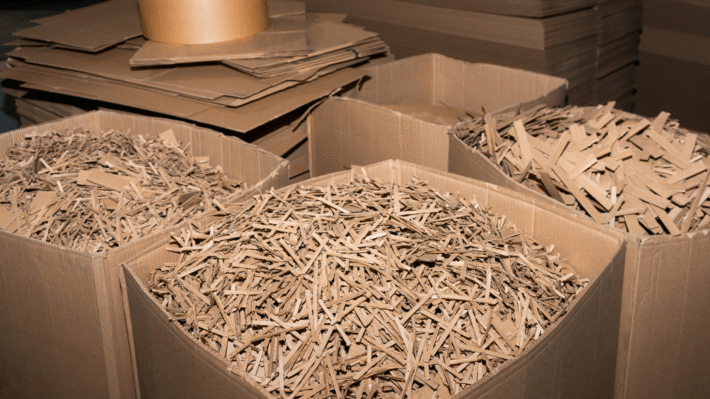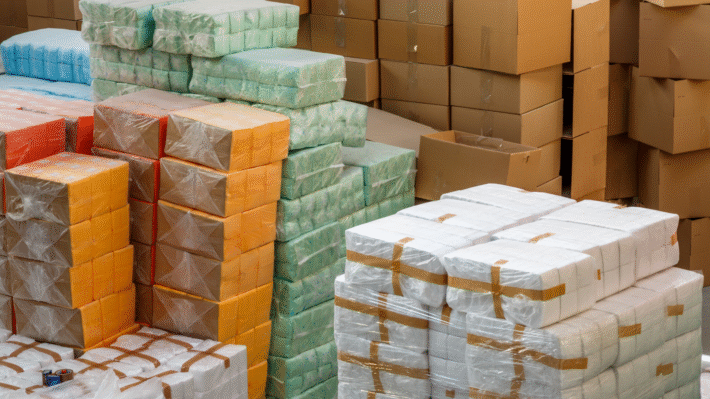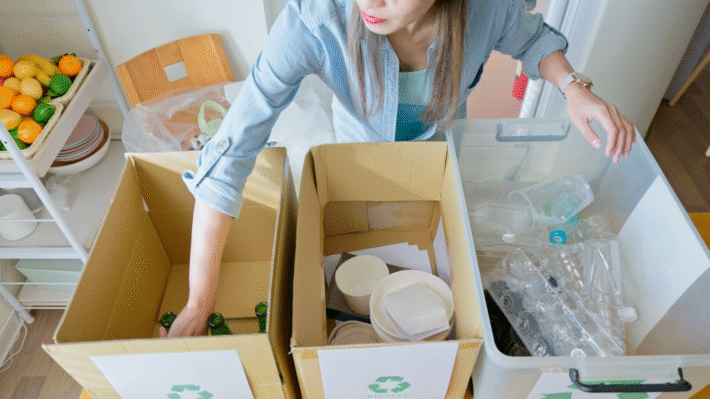Creating a Safer Future with Less Hazardous Chemical Syntheses Strategies

Welcome, fellow eco-conscious scientists and enthusiasts! Today, we’re diving into the fascinating world of Less Hazardous Chemical Syntheses. Now, more than ever, the journey towards a more sustainable, green future is crucial. Through designing synthetic routes that significantly cut down the use and generation of toxic substances, we’re not just attempting to create safer chemical transformations, but we’re developing a real, sustainable future for us all. We’ll look at everything, from key principles and strategic ways to adopt safer conditions and green catalysts, to exciting case studies across the sectors! This is a revolution in the making, and you’re part of it. So, let’s gear up to understand and spread the word about greener, safer, and exciting newer avenues in chemical synthesis. Let’s change the world, one molecule at a time!
The Importance of Less Hazardous Chemical Syntheses
Picture this dear reader, a world where we’ve switched gears. A world where our industries don’t just spit out products left and right, but where they have a keen eye on the environmental scoreboard. We’re on the brink of such a revolution, and it starts in the lab, more specifically in the world of chemical syntheses. Buckle up, because we’re going to dive into the intriguing concept of less hazardous chemical syntheses. But bear with me, because it’s not as intimidating as it sounds.
Why We Need Green Chemistry
The Traditional vs. Green Chemistry Approach
In the good old days of manufacturing, it was a simple rule – the ends justified the means. Little thought was given to the winding, often hazardous pathways that led to the creation of the desired product. Enter Green Chemistry. Instead of eyeing just the finish line, it’s about appreciating the journey. Green Chemistry essentially encourages scientist to think over, plan, and execute chemical reactions in a way that drastically reduces the generation and use of toxic substances[^1^].
Now you may wonder, my dear enthusiast, why the hullabaloo? The answer lies in the name itself – it’s “green”. And what’s greener than being environmental friendly and hazard-free! Traditional chemistry, with its often hazardous by-products, takes a severe toll on our precious environment. The Green Chemistry approach, on the other hand, firmly believes in the motto of ‘prevention is better than cure’. It helps to prevent pollution at the molecular level and is a much safer alternative.
Benefits of Green Chemistry
Now let’s take a minute to appreciate the benefits that come along with adopting Green Chemistry. Besides safeguarding our environment, it also improves energy efficiency, reduces waste, and leads to cost savings. Talk about a win-win! But this game-changer’s charm doesn’t stop there. Green Chemistry is also a boon for occupational safety. By minimizing toxic substances in chemical syntheses, it reduces the risks associated with handling dangerous chemicals.
So there you have it. Embracing less hazardous chemical syntheses isn’t just a nice-to-have. It’s an absolute necessity for the future of our planet. As the stakes get higher, Green Chemistry shows us a pathway to keep doing what we’re doing, just doing it smarter.
Key Principles for Safer Chemical Reactions
In our journey to create a less toxic world, we need to firmly grasp principles that guide synthetic processes. These principles provide a road map, assisting us in reducing harmful substances, creating safer reaction conditions, and making judicious use of green catalysts.
Reducing Toxic Substances
Reducing toxicity at the most fundamental level starts with the selection of safer compounds. Imagine going grocery shopping. You wouldn’t consciously choose items with harmful ingredients, would you? The same concept applies here. We choose components that are less harmful to us and the environment.
On a more advanced scale, chemists can design synthetic routes that avoid or minimize the use of toxic substances. A bit like cleverly navigating a busy mall to avoid the most crowded stores! It’s all about planning before diving into the chaos. Sometimes, we may have to take longer routes, and other times, we may discover shortcuts. But the key goal remains the same – Avoid. Minimize. Divert.
Creating Safer Reaction Conditions
Let’s picture a kitchen. A safe chef would turn off the oven when not in use, avoid spills, and abstain from reckless actions that could cause a fire. Similarly, chemists aim to design reactions under the safest conditions possible to avoid accidents, fires, and harmful byproducts. Using safer solvents, reducing the reaction temperatures, and exploring less hazardous mixtures – these are some of the tweaks that can make a huge difference.
Using Green Catalysts
If we think of chemical reactions like a busy intersection, catalysts act like the traffic police. They speed up reactions without getting used up themselves, in turn reducing the amount of energy required. Green catalysts take things up a notch. Like traffic lights powered by solar panels, green catalysts are designed to be environmentally friendly, contributing to safer chemical transformations. From biocatalysts, which employ nature’s own toolkit of enzymes, to heterogeneous catalysts that are easy to remove post-reaction, green catalysis is an exciting field of study teeming with potential for green chemistry.
In a nutshell, safer chemical syntheses is not just a nice-to-have, it’s a must-have. It’s about reducing the toxics, creating safer conditions, and employing green catalysts. It’s a roadmap to a cleaner, healthier world. Let’s drive through it wisely.
Strategies for Designing Safer Syntheses
In our quest to craft a cleaner and healthier world, the scientific community is constantly innovating new methods and strategies aimed at designing safer syntheses. By approaching the way we create, manipulate, and transform chemicals in an environmentally friendly way, we can significantly reduce the harmful toxins that traditionally go hand-in-hand with chemical processes. Let’s peel back the layers of this exciting front to learn more about these strategies.
Choosing Green Starting Materials
To begin our journey, we find ourselves at the start of the synthesis process, selecting the material to convert. Choosing green or sustainable starting materials is akin to building your house with sustainable bricks. These materials usually have lower impacts on the environment in their procurement and are often renewable.
Plant-based feedstocks, for instance, can replace petroleum in the production of polymers, lubricants, and many other chemicals. For more information on green starting materials, click here.
Selecting Safer Solvents
Solvents, the medium through which most chemical reactions are facilitated, take the center stage in our attempts for safer syntheses. Traditional solvents often pack a damaging environmental punch. By choosing safer, green solvents, we make our chemical processes much more harmonious with Mother Earth.
For example, water can act as a terrific green solvent in many reactions. There’s also a wealth of bio-based solvents derived from sustainable sources that promise great potential. To know more about safer solvents, try this article on safer solvent choices.
Alternative Reactions like Microwaves
What if we could ditch the conventional slow and energy-consuming reaction paths for something more efficient? Alternative reaction methods such as microwave-assisted synthesis could drastically cut down the energy needed for chemical transformations.
Microwave reactions are not only faster, but they also reduce waste, improve yield, and occasionally sidestep the need for solvents entirely! Fascinated by microwave chemistry? This book shares more insight.
Navigating the promising field of less hazardous chemical syntheses begins with these cornerstones. By adopting green starting materials, safer solvents, and alternative reaction paths, we start creating a world where science progresses without compromising our beautiful blue planet.
Assessing and Managing Chemical Hazards
When we dive into the deep sea of chemical syntheses, we cannot ignore the lurking sea monsters called ‘Chemical Hazards.’ They are hidden in every corner of the synthesis process. However, don’t fret, fellow explorer, because we have the perfect tools to navigate and manage these chemical hazards.
Understanding Toxicity Tests and Risk Analysis
To assess chemical hazards, we first need to understand toxicity tests and risk analysis. It’s like decoding the language of these sea monsters. “Toxicity Test” is the term we use for a variety of procedures used to identify the potential damage a chemical could do to us and our environment. It’s essential to use these tests to understand the dangerous effects on human health and the environment. A great resource to learn more about toxicity tests is here.
Meanwhile, as adventurous as we are, we can’t simply roam the dangerous sea. We need a meticulously created plan of harm prevention and reduction. That’s where risk analysis enters the picture. It’s the systematic application of policies, procedures, and practices to identify, analyze, assess, and control the potential risks from chemical hazards. Read more about it here.
Using HAZOP and FMEA Techniques
Embarking on the journey to navigate the terrain of risk analysis, two trusty tools are the HAZop (Hazard and Operability study) and the FMEA (Failure Modes and Effects Analysis) techniques.
HAZOP is a structured and systematic approach to assess hazards in the process. It’s like a compass that points us towards the potential dangers in an existing or planned process. It helps us to make our process safer and optimize the operation. Check out more about this useful tool here.
On the other hand, FMEA allows identification of potential failures of the process before their occurrence. It’s like having a crystal ball that shows us the possible future problems and their effects. It helps to improve the process safety and quality by recognizing and monitoring potential failures. Learn more about this prophetic tool here.
Predictive Tools for Safety
In the wondrous realm of chemical syntheses, we always strive to be two steps ahead. That’s why we apply predictive safety tools – they are like our guiding stars that lead us through the stormy sea of chemical reactions, and they help us predict and prepare for the potential hazards.
These predictive tools come in various forms such as computational models, training programs, guidelines, best practices, and even advanced AI which can predict the safety of a chemistry experiment before its execution. Check out a fascinating application of AI in predicting safety here.
So, equipped with a myriad of techniques and tools, let’s continue our journey on the sea of Less Hazardous Chemical Syntheses! Always remember, as we navigate, assess, and manage these chemical hazards, we are inching towards a safer and healthier relationship with the chemical world around us.
Real-World Examples of Green Chemistry
Life and nature are the very essence of chemistry, a science that studies substances and their interactions. But, as much as chemistry is essential to life, it can also pose risks, especially when it involves hazardous substances. This is where green chemistry steps in – a soothing balm to the issues faced by classic chemistry, making it more friendly to people and our beloved planet. Let’s dive into real-life examples of how green chemistry plays a pivotal role in creating a safer world.
Pharmaceuticals: Safer Ibuprofen Production
Ibuprofen – as regular as a household name as it gets. It’s our go-to solution for headaches, fevers, and pain. But did you know conventional production of Ibuprofen generates about 3 times the product’s weight in waste? Far from being our ideal environmentally friendly solution.
Enter green chemistry, the hero of the hour. A new synthetic route now allows for the production of Ibuprofen with significantly less waste. By cleverly designing the chemical transformations and cutting out unnecessary stages, the process has been simplified, becoming cleaner and more efficient. Today, the “green” Ibuprofen is no different than the one we know and trust, except it’s lighter on the planet. Learn more here.
Agrochemical Innovations
Next, let’s talk food. Or rather, what helps grow our food – agrochemicals. Traditional pesticides and fertilizers have a significant downside – they are detrimental to the environment and can also be hazardous to human health.
But, thanks to green chemistry, we can look towards safer and more sustainable alternatives. A fantastic example here is pheromones that deter pests in agriculture, leaving our crops unharmed and our soils uncontaminated. Another game-changer is biofertilizers, which help replenish soil nutrients naturally and sustainably. Find out more about this here.
Environmentally Conscious Material Synthesis
Finally, let’s turn our attention to the materials that make up the world around us. Many conventional production methods for plastics and other materials emit a vast amount of waste and use toxins.
But guess what? Green chemistry can help here too. Take the example of bioplastics made from renewable resources, like corn or cane sugar, which are biodegradable. What’s more, the synthesis of these materials is designed to be safer and to minimalize waste, proving that sustainable solutions do exist! Read more about it here.
Each of these examples represents a significant victory for green chemistry in its quest to make chemical syntheses less hazardous and our world a safer place. Take a moment to appreciate how chemistry, when applied correctly, can serve as a powerful tool to protect our environment.
Evaluating Green Chemistry with Metrics
To truly understand the impact of our actions in the chemistry world, we need to be able to measure and evaluate our progress. This is where green chemistry metrics come into play. These metrics help us quantify the environmental footprint of our chemical processes, and guide us toward improvements.
Understanding Atom Economy
Let us start with Atom Economy. This concept, developed by Barry Trost in 1973, is so straightforward, even a fifth grader could get it. Imagine you have a Lego set. Atom economy is all about using each and every piece (or in chemistry terms, atom) in the final product, instead of throwing some away as waste. The higher the atom economy, the greener the process. This idea of maximizing efficiency not only reduces waste, but also saves money in the long run.
E-Factor and Process Mass Intensity (PMI)
Next up is the E-Factor, which stands for Environmental Factor. Unlike Atom Economy that focuses only on the product, E-Factor takes a more comprehensive look by considering all wastes produced in a chemical process. A lower E-Factor indicates a more environmentally friendly process.
Another important metric is the Process Mass Intensity (PMI). This is simply the total mass of all materials used, divided by the mass of the product. It gives us an idea about how much raw materials we need to produce a given amount of product. Just like E-Factor, a lower PMI is what we aim for in green chemistry.
Using the TPI for Safer Transformations
Lastly, let’s talk about the TPI, or Target Performance Index. This looks at how a chemical transforms from one substance to another, and how pure the final product is. It provides a comprehensive score for the transformation, taking into account things like Atom Economy, yield, and how safe or dangerous the transformation process is.
These tools give us a clear roadmap for improvement, highlighting our green chemistry successes and showing us where we need to do better. And that’s what green chemistry is all about — not just doing less bad, but constantly striving to do better!
Conclusion: The Future of Green Chemistry
The world is facing a myriad of challenges when it comes to chemicals and substances. But, there’s a glimmer of hope. By embracing safer chemistry practices, we can mitigate many of these challenges and protect both our environment and ourselves. Remember friends, with each scientific breakthrough, we come one step closer to a greener, safer world. Now, let’s look ahead to the exciting future that awaits us.
Recapping the Importance of Safer Chemistry Practices
The saying goes, “Prevention is better than cure”. This couldn’t ring truer in the realm of chemical synthesis. By focusing on less hazardous chemical syntheses, we significantly reduce the risks associated with highly toxic substances. This not only results in safer working environments for our scientists but also leads to lesser bio-accumulation of damaging chemicals in our environment.
By putting into practice the teachings of green chemistry, we’re essentially saying no to harmful substances which can pose serious threats to living beings, and yes to sustainable, non-toxic compounds that promote a healthier ecosystem. Remember, every small change in our approach to chemical synthesis contributes positively to the world. Every atom saved, is a step toward greener chemistry.
Future Directions and Innovations
Breathe in, breathe out. Can you feel that? That’s the winds of change heralding a brighter future. As we move forward, there are ample opportunities for scientists, researchers and students alike to innovate and develop less hazardous syntheses.
Emerging technologies such as the use of microwaves and ultrasound in synthetic routes and AI-guided processes are but stepping stones into the future. On top of that, the rise of bio-catalysis and the increasing popularity of solvent-free conditions further add to the arsenal of strategies for safer chemical transformations.
Also, let’s not forget the colossal role of education in driving change! By incorporating green chemistry into our curricula and raising public awareness, we can ensure that the next generation is well-equipped to carry the mantle.
So, buckle up my friends! The road to a safer, healthier world is not without its challenges, but hey, what’s an adventure without a few hurdles? Let’s face them head-on, and remember, great things never came from comfort zones! Now, let’s take a big leap into the future, a future of Green Chemistry.



